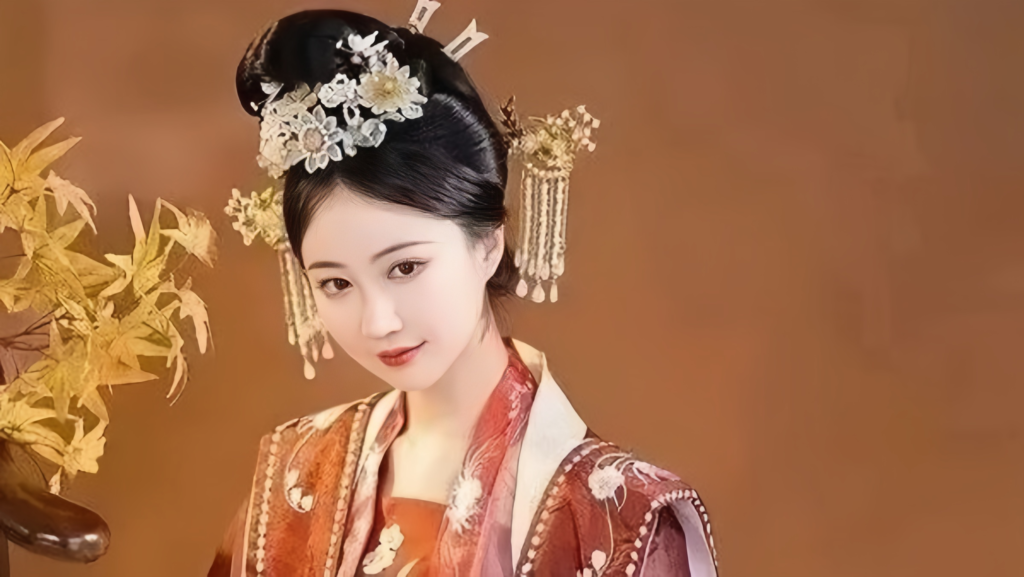Hanfu: A Cultural Symbol and Aesthetic Legacy

Across the vast expanse of China, there is a traditional attire that stands out for its elegance, grace, and the deep cultural history it carries—this attire is known as Hanfu. As the traditional clothing of the Han people, Hanfu has long been regarded as a cultural symbol, representing the rich heritage of China. It has been worn for thousands of years and continues to be an enduring cultural symbol of Chinese culture.

The History and Origins of Hanfu
The story of Hanfu dates back to ancient times, with its basic design emerging during the Shang and Zhou dynasties. Characterized by wide sleeves, a right-lapping collar, and flowing fabrics, Hanfu represents an aesthetic that combines simplicity and elegance. Over centuries, each dynasty added its own touch to Hanfu’s design, incorporating new aesthetic influences and cultural elements, which resulted in a vast variety of styles and traditions. Today, Hanfu aesthetics are appreciated globally for their timeless beauty.
Throughout history, Hanfu wasn’t just a piece of clothing; it was a cultural symbol reflecting the values and principles held by the people. It demonstrated the Chinese people’s respect for nature, the cosmos, and the universe, while also serving as a means to express identity and cultural pride. This sense of pride is deeply embedded in Hanfu’s role as a cultural symbol that has stood the test of time.
The Aesthetic Value of Hanfu
The beauty of Hanfu lies in its aesthetic qualities, from its flowing lines to its intricate designs. The Hanfu aesthetics include delicate embroidery, piping, and edging, all crafted with great thought and skill. These design elements give the attire a serene, harmonious quality that reflects the values of ancient Chinese culture. Every piece of Hanfu feels like a work of art, crafted to evoke a connection to the past while maintaining its cultural integrity.
But the beauty of Hanfu isn’t just skin-deep. It embodies an inner spirit that resonates with ancient Chinese philosophies. It represents a love for life and a deep respect for the natural world, as well as a pursuit of morality, ritual, and beauty. When wearing Hanfu, it’s almost as though you’re transported back in time, able to feel the rhythm of life and the cultural richness of ancient China.
The Modern Significance of Hanfu
In today’s world, Hanfu is more than just an ancient garment; it has evolved into a cultural symbol and a spiritual icon. More and more people are drawn to Hanfu as they wear it to participate in various events, cultural celebrations, and even casual gatherings. This represents a modern resurgence of Hanfu aesthetics, as people reconnect with their roots and embrace traditional Chinese values.
Moreover, Hanfu has become a bridge for cultural exchange, particularly on the international stage. As one of China’s most recognizable cultural symbols, Hanfu is helping to showcase Chinese beauty and confidence to the world. Through wearing Hanfu, people from different countries are able to better understand and appreciate the depth of Chinese cultural traditions and Hanfu aesthetics.
The Inheritance and Innovation of Hanfu
The future of Hanfu depends on its ability to blend tradition with innovation. On one hand, it’s essential to preserve the ancient craftsmanship and cultural heritage of Hanfu, including its aesthetic qualities and the symbolic meaning it carries. On the other hand, it needs to adapt to modern tastes and practical needs.
For preservation, we can study and learn from traditional Hanfu-making techniques, ensuring that these ancient practices are passed down to future generations. This includes understanding the aesthetic choices of previous dynasties, like the choice of fabric, color, and embroidery techniques, which are part of the Hanfu aesthetics. Hosting exhibitions, performances, and cultural events can help raise awareness and educate people about the significance of Hanfu, keeping the culture alive and relevant.
On the innovation side, Hanfu can be reimagined with modern design sensibilities and contemporary materials. By incorporating modern techniques and new fabrics, we can create Hanfu styles that meet the fashion needs of today’s world while still preserving the Hanfu aesthetics. This innovation can also focus on improving comfort and functionality, such as using lighter, more breathable materials for a modern twist on the traditional look.
Conclusion
As a traditional attire of the Han people, Hanfu has journeyed through thousands of years, becoming an iconic cultural symbol of Chinese culture. It carries with it not only the rich history of China but also the values of respect for life, nature, and morality, as well as the pursuit of beauty. Today, Hanfu is more than just clothing; it’s a cultural symbol and a reflection of the timeless spirit of the Chinese people.
In modern society, it is essential that we honor and preserve the traditional techniques and designs that make Hanfu so special, while also embracing the need for innovation to meet contemporary needs. This way, we can ensure that this precious cultural heritage continues to shine brightly, adapting to the future while staying deeply rooted in tradition and Hanfu aesthetics.





Responses